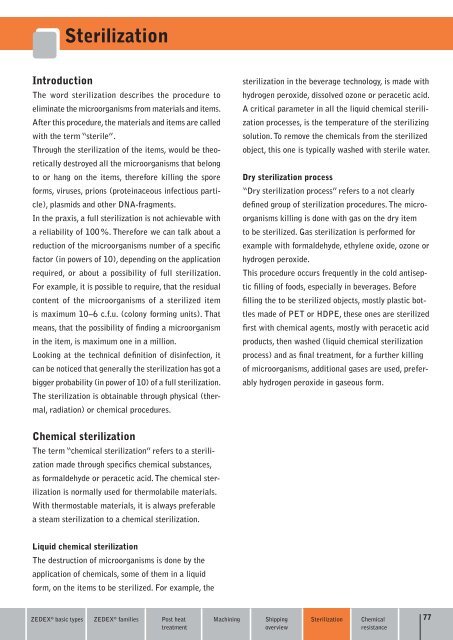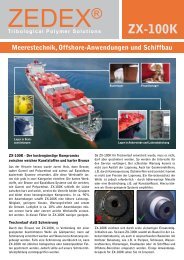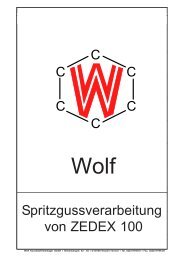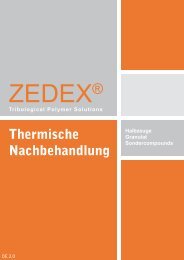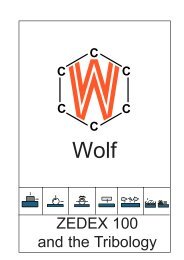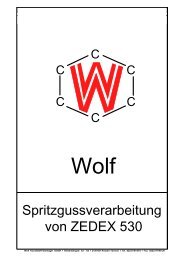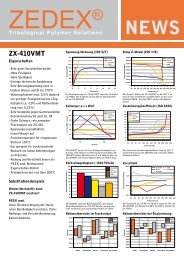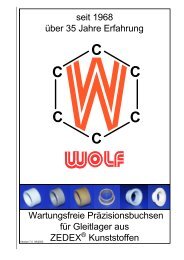Semi-finished products Plastic granules Special compounds
Semi-finished products Plastic granules Special compounds
Semi-finished products Plastic granules Special compounds
- No tags were found...
You also want an ePaper? Increase the reach of your titles
YUMPU automatically turns print PDFs into web optimized ePapers that Google loves.
SterilizationIntroductionThe word sterilization describes the procedure toeliminate the microorganisms from materials and items.After this procedure, the materials and items are calledwith the term “sterile”.Through the sterilization of the items, would be theoreticallydestroyed all the microorganisms that belongto or hang on the items, therefore killing the sporeforms, viruses, prions (proteinaceous infectious particle),plasmids and other DNA-fragments.In the praxis, a full sterilization is not achievable witha reliability of 100 %. Therefore we can talk about areduction of the microorganisms number of a specificfactor (in powers of 10), depending on the applicationrequired, or about a possibility of full sterilization.For example, it is possible to require, that the residualcontent of the microorganisms of a sterilized itemis maximum 10−6 c.f.u. (colony forming units). Thatmeans, that the possibility of finding a microorganismin the item, is maximum one in a million.Looking at the technical definition of disinfection, itcan be noticed that generally the sterilization has got abigger probability (in power of 10) of a full sterilization.The sterilization is obtainable through physical (thermal,radiation) or chemical procedures.sterilization in the beverage technology, is made withhydrogen peroxide, dissolved ozone or peracetic acid.A critical parameter in all the liquid chemical sterilizationprocesses, is the temperature of the sterilizingsolution. To remove the chemicals from the sterilizedobject, this one is typically washed with sterile water.Dry sterilization process“Dry sterilization process” refers to a not clearlydefined group of sterilization procedures. The microorganismskilling is done with gas on the dry itemto be sterilized. Gas sterilization is performed forexample with formaldehyde, ethylene oxide, ozone orhydrogen peroxide.This procedure occurs frequently in the cold antisepticfilling of foods, especially in beverages. Beforefilling the to be sterilized objects, mostly plastic bottlesmade of PET or HDPE, these ones are sterilizedfirst with chemical agents, mostly with peracetic acid<strong>products</strong>, then washed (liquid chemical sterilizationprocess) and as final treatment, for a further killingof microorganisms, additional gases are used, preferablyhydrogen peroxide in gaseous form.Chemical sterilizationThe term “chemical sterilization” refers to a sterilizationmade through specifics chemical substances,as formaldehyde or peracetic acid. The chemical sterilizationis normally used for thermolabile materials.With thermostable materials, it is always preferablea steam sterilization to a chemical sterilization.Liquid chemical sterilizationThe destruction of microorganisms is done by theapplication of chemicals, some of them in a liquidform, on the items to be sterilized. For example, theZEDEX ® basic types ZEDEX ® families Post heattreatmentMachiningShippingoverviewSterilizationChemicalresistance77


